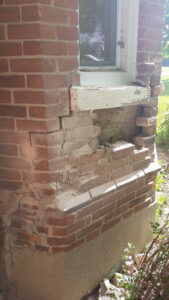When it comes to masonry restoration, it is important to choose the best treatment method for the specific problem. This requires careful research and testing to determine the root cause of the problem. The choice of treatment will affect the performance of the masonry wall. The timeline and budget of the project will also determine which treatment option is ideal. Detailed descriptions of damage will help the restoration team make the best decision. If the project team is not well-prepared, a repair option may be developed too early and fail due to issues that have not yet been resolved.
Tuckpointing is a necessary part of masonry restoration. Old mortar can become weakened and deteriorate, causing brick and stone to crack, crumble, and bulge. The tuckpointing process repairs these damages by restoring the structural integrity of the mortar and bricks. Visit Website for more details.
Water seepage through these cracks can cause extensive damage to a building. It can also lead to the growth of mold and mildew on the interior walls. These problems are often difficult to detect until they become extensive, causing costly repairs to the structure. Professional tuckpointing can prevent these issues and save you money in the future.
A professional masonry contractor can provide you with a quote for the work needed. During the tuckpointing process, the bricks are matched to the existing bricks, and the color of the mortar is matched to the existing bricks. Ensure that the tuckpointing is smooth and blends seamlessly with the existing bricks.
Despite the similarities between repointing and tuckpointing, the two processes differ greatly in their final aesthetic. Aside from a difference in color, tuckpointing uses two different types of mortar. In addition, it uses a thinner line of mortar for the spacing line. These differences in appearance make it difficult for many to distinguish between repointing and tuckpointing.
If your brickwork or stonework is starting to look a bit worn down, repointing can restore it to its former beauty. However, repointing is not a replacement for new bricks, and the process should be handled carefully. If done improperly, the process could result in uneven strength throughout the building and further deterioration of the joints. When repointing, color matching is important, but other factors should be considered, such as texture, hardness, and vapor permeability. A good mortar should match bricks and stone to avoid undue stress and deterioration of the masonry.
First, old mortar should be removed from the masonry. A variety of tools can be used for this process. Using a grinder or power masonry blade is recommended to remove softer mortar joints. Next, new mortar must be mixed in and applied evenly in the joint areas. This ensures that the new mortar fills in the voids in the building. Afterward, the procedure should be inspected to ensure proper adherence to the original masonry.
Repointing in masonry restoration is a vital part of preserving the integrity of a masonry building. It can prevent water damage and prevent further deterioration of the structure. Besides, repointing can help restore the look and functionality of masonry structures. It is also an important maintenance procedure that can extend the life of brick structures.
Repointing is an important part of masonry restoration and should be done when the original mortar is no longer functioning properly. It can be an ideal solution when you want to improve the appearance of a building, but repointing is not a long-term solution to structural problems. In addition, if repointing is not done correctly, it could result in irreversible damage.
Flashings are a critical part of masonry restoration projects. Installed properly, they can help extend the life of masonry work and prevent almost all water infiltration on building facades. In addition, they are relatively inexpensive compared to the cost of major building repairs, making them a good investment for the future of the building.
Flashings can be made from a variety of materials, including copper, galvanized steel, stainless steel, lead, plastics, and asphalt-impregnated membranes. Many applications require self-adhesive membranes, which are preferred by masonry designers and builders. Self-adhesive membranes provide adequate durability for many types of flashings. Copper, stainless steel, and lead flashing are especially popular in buildings with long service lives. Regardless of the type of material used, it is important to install flashings in continuous runs with sufficient overlap and with adhesive at joints.
When installing flashings, remember to measure and mark the height of the excess mortar. Usually, the rule of thumb is eight inches high. However, for a 10-inch mortar collection grid, the height should be at least sixteen inches. This will ensure that the flashing will be properly installed.
